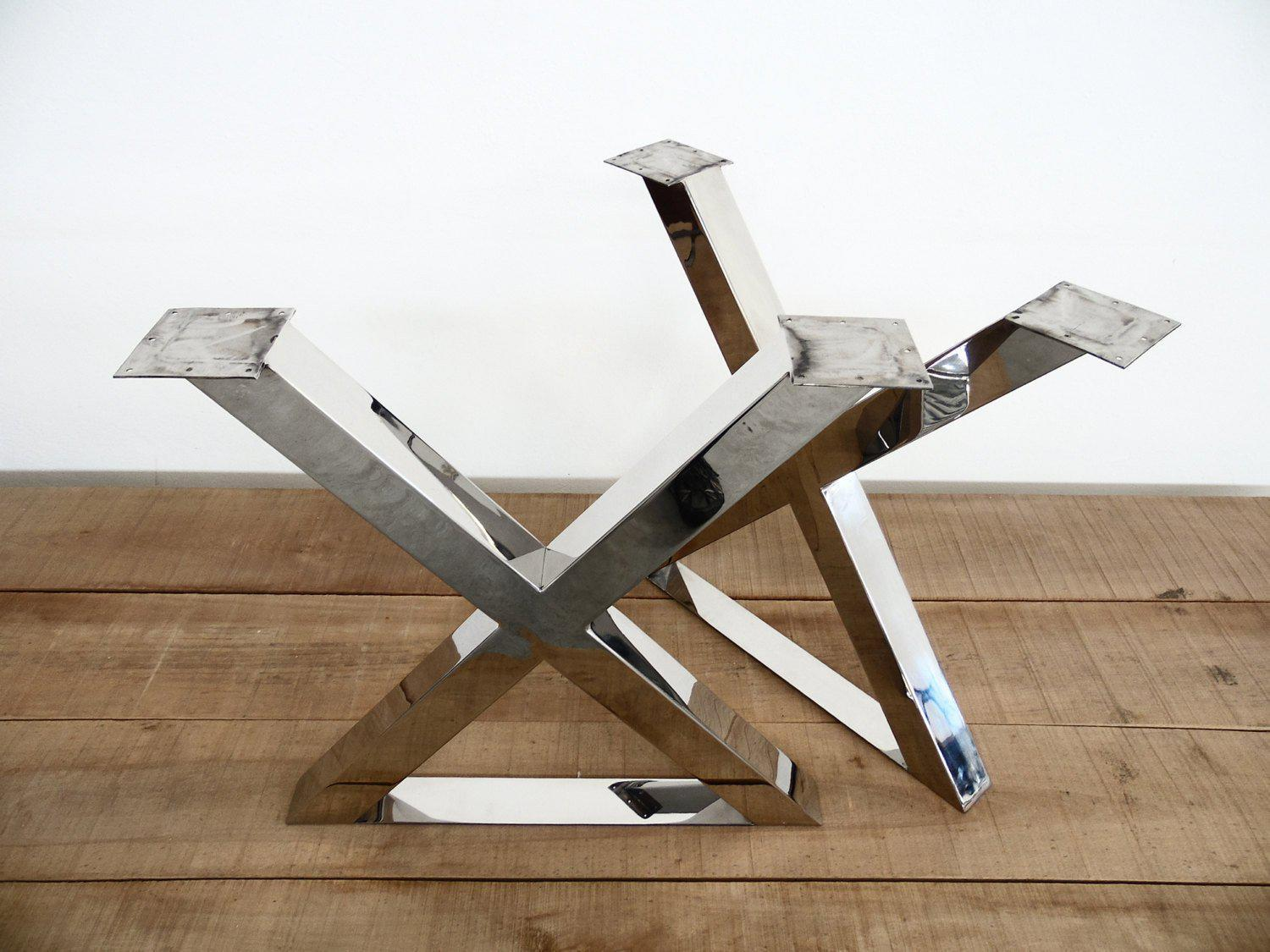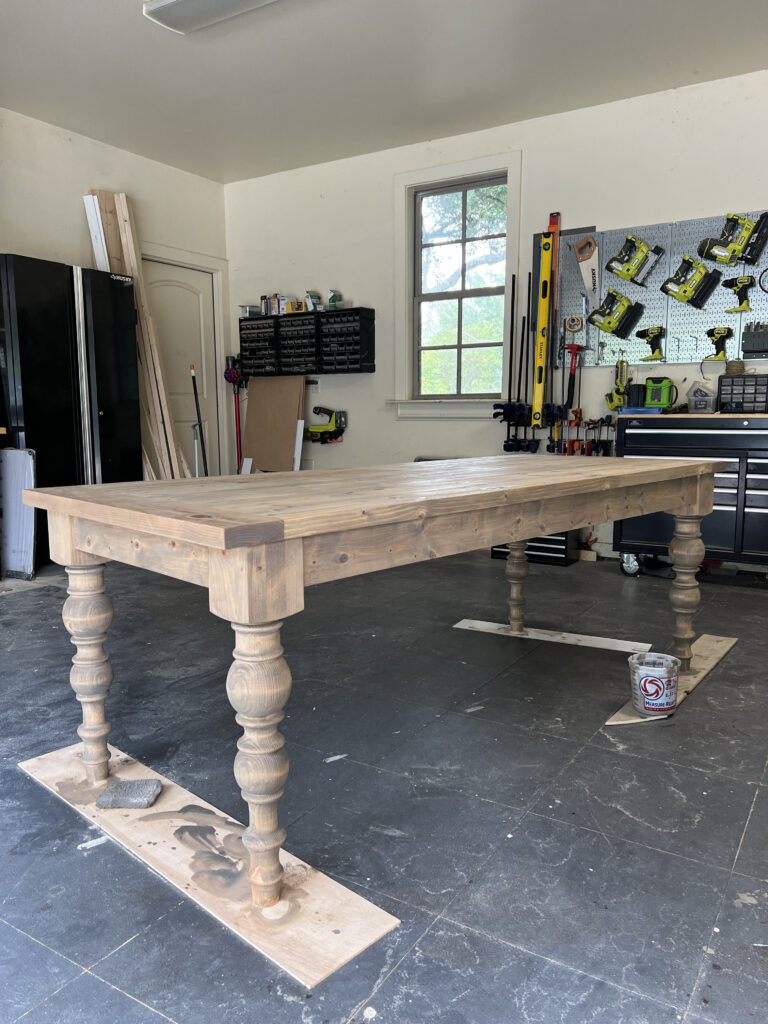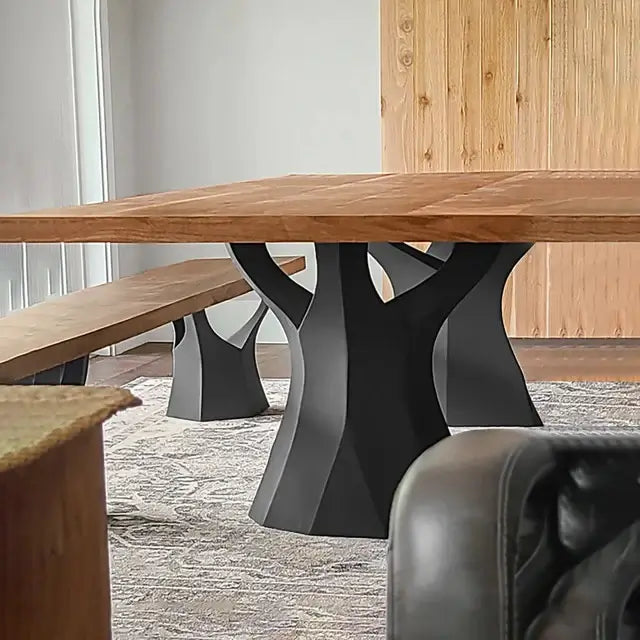Necessary Factors To Consider for Selecting the Right Dining Table Legs Wood
Choosing the proper timber for eating table legs includes a nuanced understanding of different variables that influence both capability and visual allure. The selection of wood kind, varying from durable hardwoods to a lot more fragile softwoods, plays a crucial duty in making sure toughness and stability. Each of these aspects can considerably affect the total experience of your dining room.
Importance of Timber Type

Hardwoods, such as oak, maple, and walnut, are usually chosen for their toughness and resistance to put on. These sorts of timber provide a robust foundation that can stand up to everyday use, making them optimal for eating tables that experience constant gatherings. In contrast, softer timbers like want might be much more susceptible to damages and scrapes, which may not be excellent for high-traffic locations.
Furthermore, the option of timber can likewise impact the ease of upkeep. Some timbers require regular oiling or sealing to preserve their appearance, while others might be extra flexible. Inevitably, choosing the ideal timber type entails stabilizing visual considerations with useful needs, ensuring that the table legs not only look attractive but also stand the examination of time.
Analyzing Security and Toughness
When evaluating eating table legs, one have to consider the stability and strength they provide to the general structure. The legs are crucial in sustaining the tabletop and guaranteeing the eating experience is safe and satisfying. A steady table is essential for protecting against tipping or wobbling, which can lead to spills or mishaps during meals.
The selection of wood kind substantially impacts strength. Woods such as oak, maple, and walnut are typically a lot more durable and resilient than softwoods like yearn or fir. In addition, the density and design of the legs play a crucial role; thicker legs or those with a conical style can supply far better assistance and security.

Aesthetic Considerations
While capability is paramount, the aesthetic appeal of dining table legs can not be forgotten, as they dramatically affect the total layout and atmosphere of the eating space. The selection of wood, layout, and surface can detract or improve from the table's aesthetic impact.

Coatings also play an important function in looks. A natural coating can highlight the timber's inherent charm, while repainted or stained legs can present color and personality right into the room. The proportion and range of the legs family member to the table top and bordering furniture needs to be considered to make certain aesthetic equilibrium and cohesion.
Eventually, the table legs should not just offer a useful function but additionally add to a natural and inviting atmosphere, making them a vital consideration in the general design of the dining location.
Maintenance Requirements
To make certain long life and maintain the appeal of wood dining table legs, routine upkeep is necessary (Dining Table Legs Wood). Wood is a natural product that can be vulnerable to damage from dampness, warmth, and use. For that reason, establishing a routine treatment plan will dramatically enhance the toughness of your eating table legs.
Begin with normal dusting using a soft, lint-free fabric to eliminate dust and debris that can damage the surface. For more complete cleaning, use a mild soap service and damp towel, avoiding excess wetness that might seep into the wood. It is recommended to apply a high-grade wood gloss or conditioner every few months to nurture the timber and preserve its gloss.
Furthermore, think about the setting where the table is placed. Prevent straight sunshine, as read more it can cause fading, and use rollercoasters or placemats to secure the surface from warmth and dampness. Attend to any kind of scratches or dents promptly with proper timber filler or touch-up pens to avoid further deterioration. By adhering to these upkeep demands, you will certainly not just protect the aesthetic appeal of your wood table legs but also extend their useful lifespan.
Spending Plan and Price Aspects
Budget plan and cost elements frequently i thought about this play a vital duty in the decision-making procedure for picking wooden eating table legs. When evaluating alternatives, it is important to develop a clear budget plan that lines up with your total furniture financial investment. The expense of wooden table legs can vary considerably based upon the type of style, workmanship, and wood intricacy.
Hardwoods such as cherry, walnut, and oak usually command higher rates as a result of their durability and aesthetic charm. On the other hand, softer timbers like yearn might be extra inexpensive yet might not use the very same durability. Furthermore, customized or artisan-crafted legs can incur extra costs, mirroring the skill and time spent in their creation.
It is also essential to consider the prospective lasting value of your investment. While choosing lower-cost materials could appear financially prudent at first, they may call for even more constant substitute or repair services, eventually boosting total expense.
As a result, balancing quality and price is vital. Focus on products that fulfill your visual choices while ensuring they fit pleasantly within your budget plan, permitting you to create an eating area that is both aesthetically appealing and functional.
Verdict
In verdict, picking the ideal wood for dining table legs demands mindful consideration of numerous elements, consisting of wood kind, security, aesthetics, maintenance, and budget. Inevitably, a knowledgeable choice will certainly enhance the Learn More longevity and visual charm of the dining table, making certain fulfillment and functionality for years to come.
Selecting the right kind of wood for dining table legs is important for both aesthetic allure and architectural integrity. Eventually, choosing the suitable timber type entails stabilizing aesthetic considerations with sensible needs, guaranteeing that the dining table legs not just look attractive but additionally stand the examination of time.
It is a good idea to use a premium wood polish or conditioner every few months to nurture the wood and keep its gloss.
The expense of wooden dining table legs can differ substantially based on the kind of wood, layout, and craftsmanship intricacy.
In final thought, selecting the ideal wood for eating table legs necessitates mindful consideration of numerous aspects, consisting of wood kind, stability, aesthetic appeals, upkeep, and budget plan.